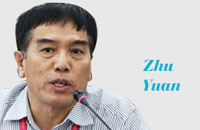Drop outdated models
By Colin Speakman (China Daily) Updated: 2012-01-16 08:06
Since we have entered the new year and are approaching the Chinese Year of the Dragon, it is time to assess anew how the West sees China. Various models of the relationship can be discerned since China began its reform and opening-up more than three decades ago. The predictions of some have since been proven wrong by events, but the West seems unwilling to consign them to the pages of history and they have gained currency even in early 2012.
An early popular model was that China's rise was temporary and it would soon collapse. This model assumed economic change required political change (as reflected in Eastern Europe) and underestimated the ability of the Communist Party of China (CPC) to drive the country forward. These predictions have proven wrong because they forecast a collapse by a time that has "long been and gone", including the first half of the last decade. Yet even last year there were articles and media headlines talking about China's imminent collapse, for doubters claimed that all the drivers of China's success - cheap labor, abundant natural resources and growing global demand - were faltering.
They are all relative and China's 12th Five-Year Plan (2011-2015) assumes an annual GDP growth of about 8 to 9 percent versus a past long-term trend of near double-digit growth. Such a growth rate will still be the envy of the West and definitely not mean a collapse.
The second model, which followed naturally from the failure of the first, was that if China is not about to collapse it must be a threat. This model encompasses political and economic aspects both. The West raises concerns over CPC policies, human rights "violations," and the country's military build-up as GDP grows and funds them. It alleges that China is usurping Western jobs and worries over China's financial muscle to buy assets abroad. China has had more than 30 years' of peaceful rise and, earlier this year, reinforced its commitment to peaceful development in a government white paper.
Despite that, very recent actions and statements from the United States show that it perceives China as a threat. At the very least that China "needs to be contained". This is a more recent version of the threat model, backed by attempts to control China through the World Trade Organization with anti-dumping cases, demands for revaluation of the yuan and "environmental agreements" seeking to impose severe emission/carbon foot print limitations on China (and other developing countries) vis-a-vis the West.
All these models are counter-productive for the current global economic crisis given the continuing concerns over international terrorism. They need to be replaced by positive models emphasizing cooperation.
A better model to characterize China's rise is that it still represents an opportunity for the West. This is certainly the tenure of many business-focused treatments of the past 30 years. China has presented a huge opportunity for Western businesses to make low production cost goods for Western markets in joint ventures and increasingly a big opportunity to sell Western production (mainly made in China) in domestic markets as the Chinese economy grows. Even then some Western media prefer to dwell on the negatives, focusing on constraints on opportunities - that there is no level playing field versus local organizations and that there are government restrictions.
It seems Western news about problems with China always sells better than news about successful cooperation. But China still represents an opportunity more than anything else for the West to achieve business growth.
Two further models of more recent development are worthy of support, though. China has matured and opened-up and is contributing to global development and it is thus best regarded as a responsible stakeholder in the 21st century. The G8 has been replaced by the G20, with China playing an important role. China through its membership in BRICS (Brazil, Russia, India, China and South Africa) is a leading campaigner for the developing countries, especially those with low incomes. It has helped less advantaged continents - Africa, Latin America - with trade deals and investment. And China has helped the West by buying governments' debts and maintaining robust economic growth.
Perhaps the second recent model is more relevant. As referenced by US Secretary of State Hillary Clinton during her China visit and by International Monetary Fund Managing Director Christine Lagarde during a talk in Beijing in November, China and the West are rowing in the same boat.
The aspects in common between China and the West outweigh any differences. China and the West are in same boat facing the same problems, and the boat will cross a river with choppy waters better if all row in the same direction. The common threats - the financial crisis, terrorism, nuclear proliferation and environmental problems - are very important and need to be tackled together. This also reflects US President Barack Obama's statements that the relationship between China and the US is most important of 21st Century.
So for the good of future growth, the West needs to regard China as a continuing opportunity to engage with a responsible global stakeholder and work together to battle the global challenges. There's no room for outdated models, no matter how well they sell in the West.
The author, an economist, is director of China programs at CAPA International Education, an UK-USA-based organization that cooperates with Capital Normal University and Shanghai International Studies University.
(China Daily 01/16/2012 page9)











